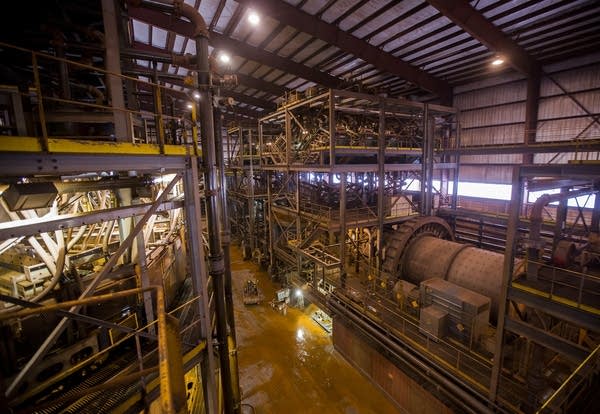Iron Range agency looks to the day when ore's no more

Go Deeper.
Create an account or log in to save stories.
Like this?
Thanks for liking this story! We have added it to a list of your favorite stories.
One of Gov. Mark Dayton's first tasks in the new year is to name a new commissioner of the Iron Range Resources and Rehabilitation Board. The person leaving the position jokes that 90 percent of the job is explaining what the IRRRB is.
"Once somebody fully understands it, especially a politician in St. Paul, they tend to retire, then you have to start the process all over again," said Tony Sertich, who has served four years as IRRRB commissioner. The former House majority leader is leaving to head the Northland Foundation.

Here's how he explains the IRRRB:
It's a state agency — the only one headquartered outside of St. Paul, in Eveleth. It's the only one that serves just a portion of the state.
Turn Up Your Support
MPR News helps you turn down the noise and build shared understanding. Turn up your support for this public resource and keep trusted journalism accessible to all.
And it doesn't receive any state funding. Sertich explained that it's funded by a portion of a taconite production tax that iron mines pay in lieu of local property taxes.
"To this day, people have a hard time really squaring the idea that you can have a state agency that is funded by local dollars," he said. "A lot of folks think that the IRRRB goes down to St. Paul, and gets tax dollars from Minneapolis and Moorhead and Mankato and all points in between, and brings them up north. But that is just not the case."
Money from the mining companies pays for a lot of things that property taxes everywhere pay for, like schools and public infrastructure. But it also goes to fund business development projects — part of a longstanding effort to diversify the Iron Range economy beyond taconite mining.
Aaron Brown, an Iron Range blogger and community college professor, calls that dual mission a paradox.
"It's really hard to have a government agency, and an economic force like this, that's funded entirely by an industry — mining — and then task it with thinking about an economy that would go beyond mining," Brown said.
Over the years critics have pounced on the agency for some well-publicized failures, including an ill-fated chopsticks factory in Hibbing that opened in 1987 with $5 million in public funding. It shut down two years later.
Brown said the perception of that episode — "Up on the Range, they're making chopsticks, and it didn't work so well" — turned it into a "folk legend of failure."
More recently, the agency invested nearly $10 million into a clean-coal project, called the Mesaba Energy Project, that never got off the ground.
But the IRRRB has also scored some major successes, including its stake in a company called Magnetation. The firm developed a technology to mine iron ore waste left behind in abandoned tailings basins.
Company President Matt Lehtinen said the IRRRB lent the company $5.5 million five years ago. "I remember on the loan application the number of full-time-equivalent employees we put on there was only 19," he said.
When the company's fourth processing plant opens early in 2015, he said, "We're going to be pushing 400 high-paid direct employees here on the Iron Range."

Magnetation paid back that initial loan several years early. The company also agreed to pay the IRRRB $25 million in royalties as part of its initial loan package. To date, the company has paid close to $7 million, in addition to the interest on the loan, Lehtinen said. The IRRRB recently lent the company an additional $13 million to help it complete its fourth plant.
The agency has also invested in tourism, as when it purchased the Giants Ridge ski area in 1983. But more recently the agency has focused on smaller projects, Sertich explained at his final board meeting earlier this month.
"When I got here, I said we're not going to always swing for the fences and try to hit home runs," he recalled. "We're going to try to hit a lot of singles and doubles, and help these businesses create jobs three, four, five at a time."
Sertich said that approach can create a more diverse economy over time. In the last four years, he said, the agency has helped 175 small businesses grow in the region.
But he acknowledged that most of the region's eggs remain in one basket: mining.
That's OK now, with six taconite mines running full-tilt. But after such booms, there tend to come busts. Back in the 1970s, the IRRRB created a rainy day fund to help protect against those downturns.
But as that fund has grown — it now stands at $139 million — legislators in St. Paul have eyed it as a potential source of cash to help balance the state budget.
It hasn't happened yet. But in his final act as commissioner, Sertich proposed a plan to protect $100 million of that fund from any such future raids.
Proceeds from the so-called Range Trust will be used to try to achieve the same difficult goal the IRRRB has always had: to build an Iron Range economy that can thrive long after the last bit of iron ore is scratched out of the ground.



